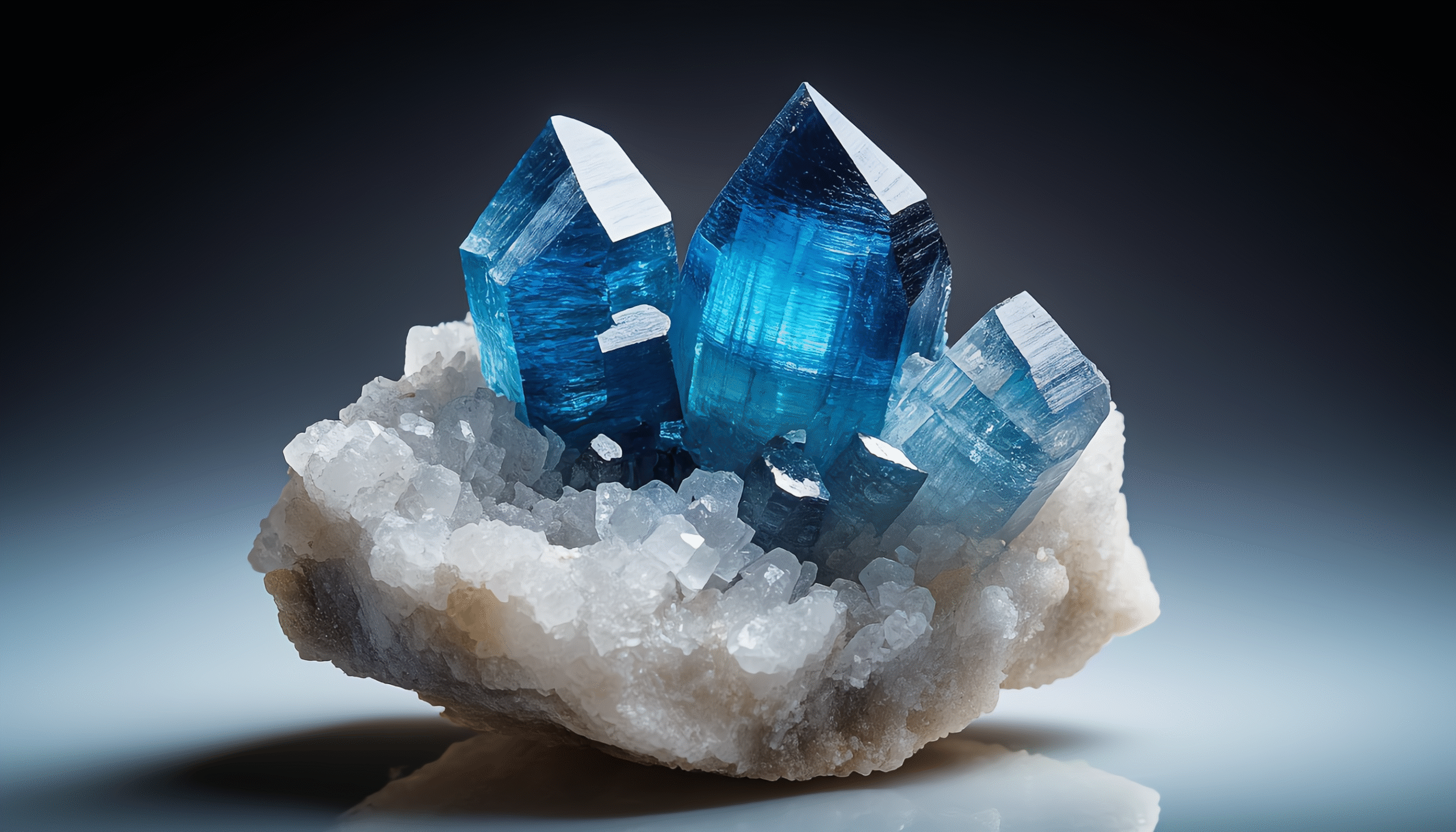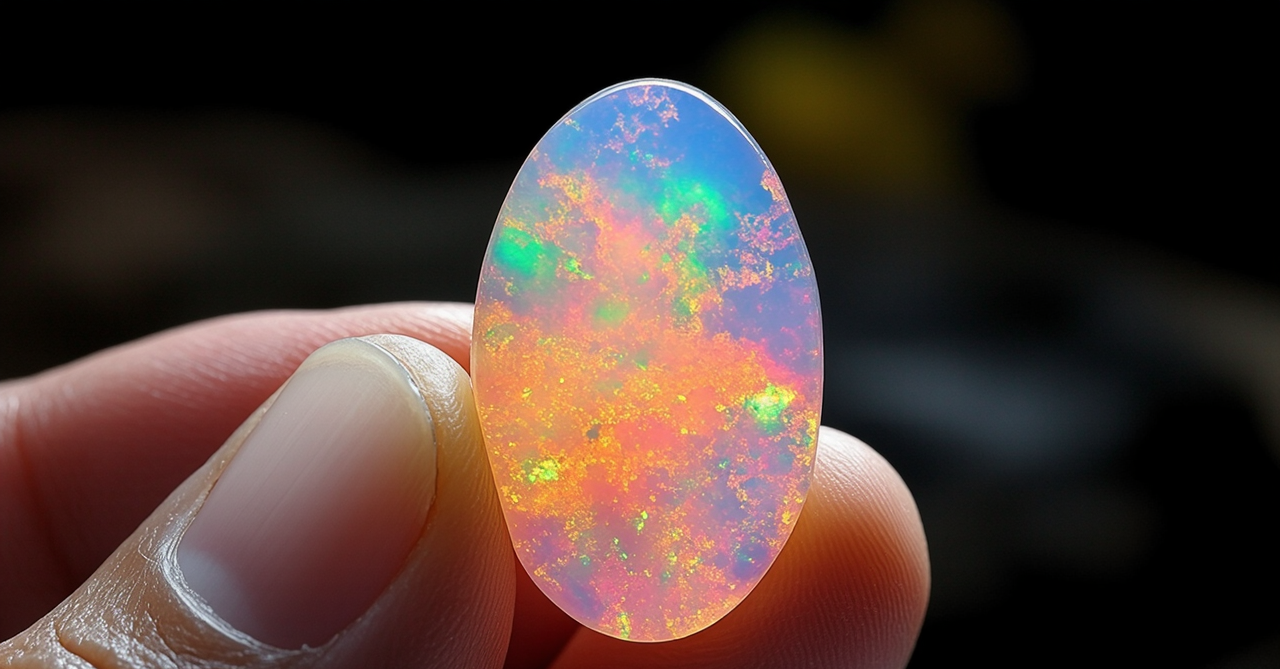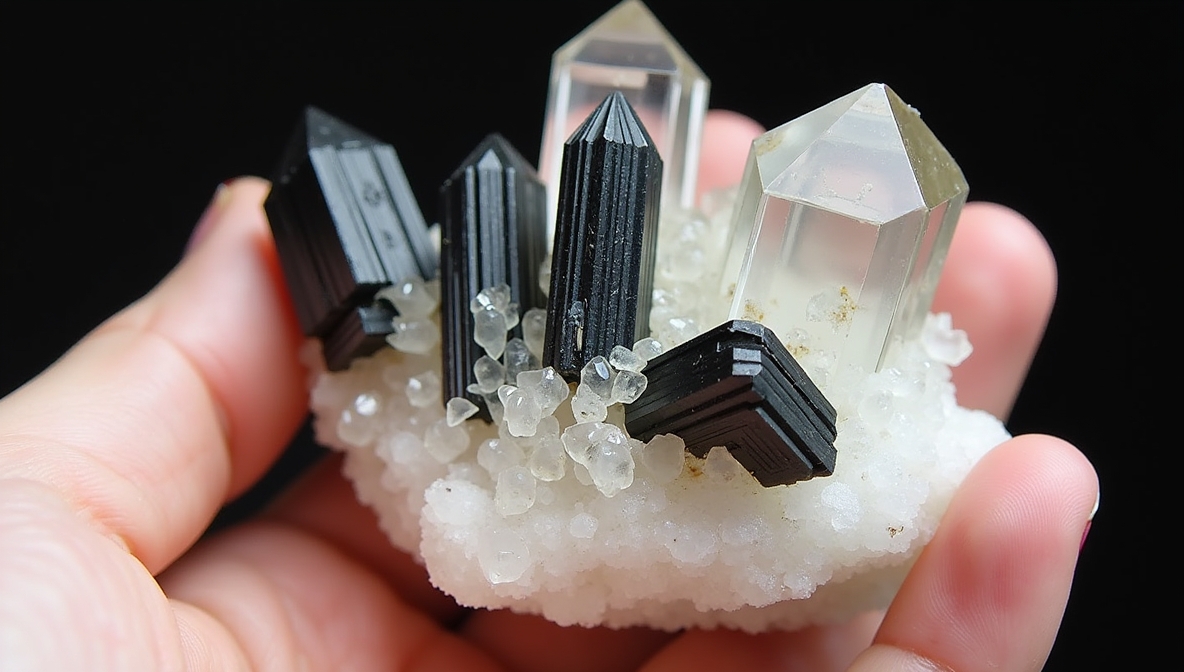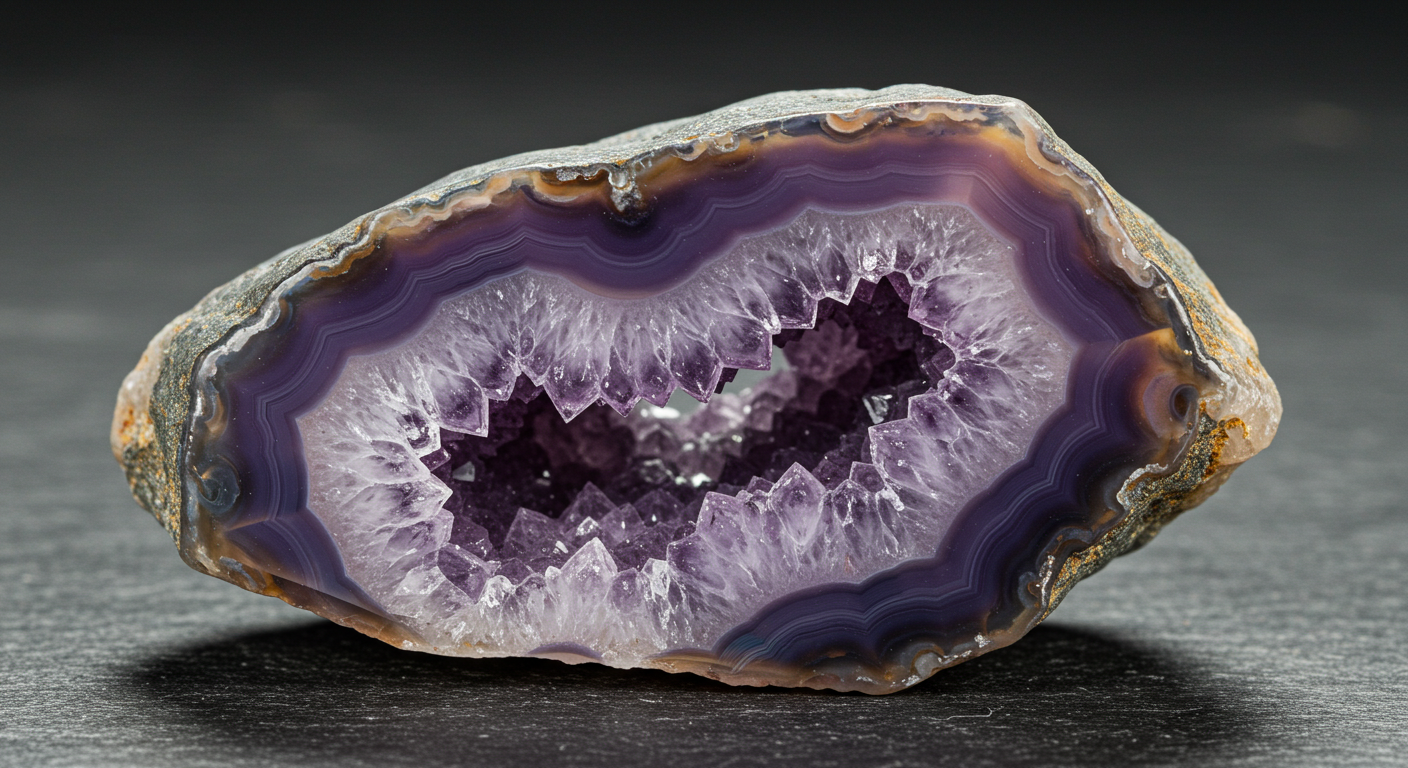See this incredible What Is Amethyst Crystal?, Explore its intricate patterns and natural beauty.
Amethyst, with its captivating purple hues, is more than just a pretty gemstone. It holds a rich history, fascinating properties, and a significant place in various cultures and spiritual practices. Let’s delve into the world of this enchanting crystal.
What is Amethyst?
Amethyst is a violet variety of quartz, a mineral composed of silicon and oxygen atoms. Its captivating purple color is due to natural irradiation and the presence of iron impurities within its crystal structure. The intensity of the purple color can vary greatly, ranging from pale lilac to a deep, rich violet. 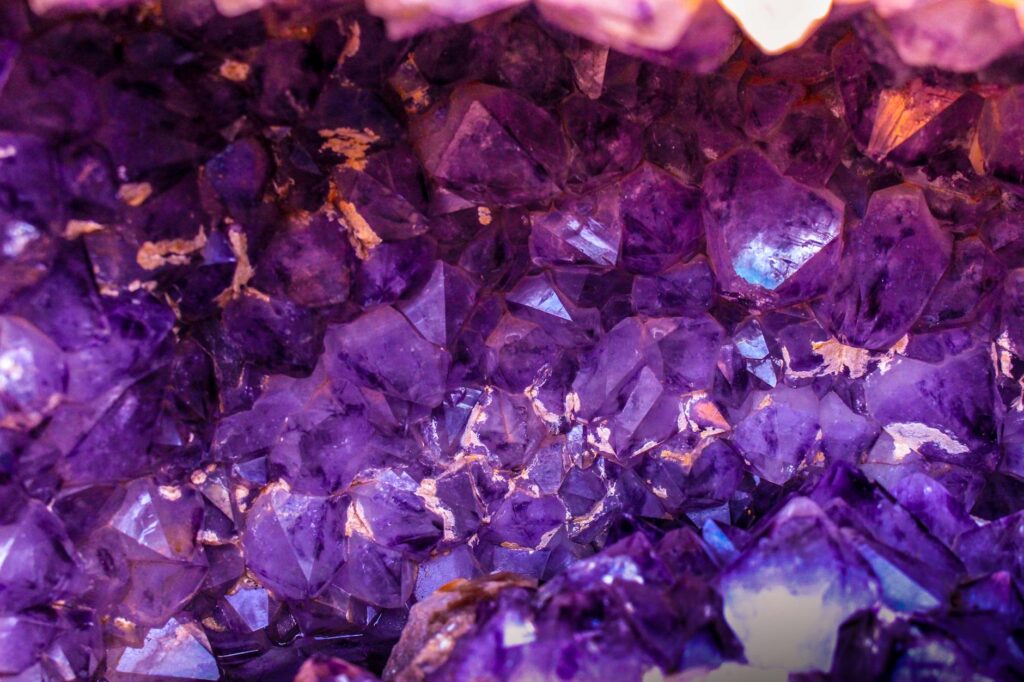
Amethyst’s Formation and Sources
Amethyst forms in geodes, which are hollow rock cavities lined with crystals. These geodes are often found in volcanic rocks and sedimentary formations. Major amethyst sources include Brazil, Uruguay, Zambia, and the United States. The specific geological conditions of each location influence the color and quality of the resulting amethyst crystals. Learn more about amethyst mining.
Amethyst’s Color and Variations
The color of amethyst is its most striking feature. However, the shade can vary considerably depending on several factors including iron content, irradiation exposure, and the presence of other trace elements. Some amethysts exhibit color zoning, showing variations in hue throughout a single crystal. You can find amethysts in shades ranging from light lavender to deep purple, sometimes even with reddish or bluish secondary tones. 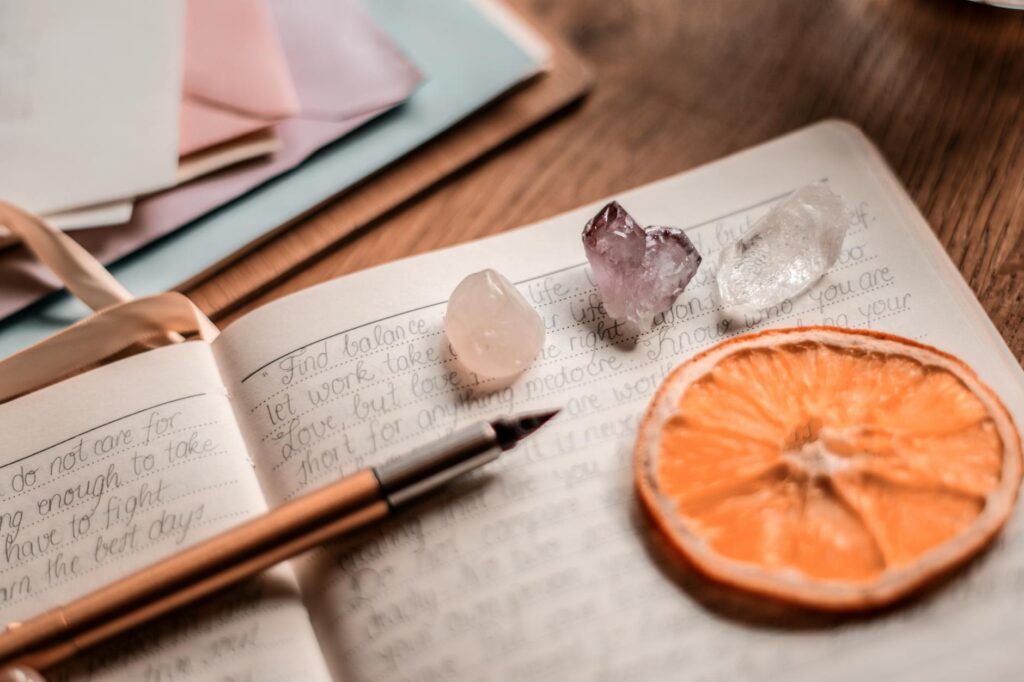
Amethyst in History and Culture
Amethyst has been prized for its beauty for thousands of years. Ancient Greeks believed it could prevent intoxication, while Romans used it in jewelry and carved it into cameos. In various cultures, amethyst has been associated with royalty, spirituality, and protection. Read more about amethyst in mythology.
Amethyst Healing Properties
Amethyst is frequently used in crystal healing practices. It is believed to have calming and soothing properties, promoting relaxation and reducing stress. Some believe it can enhance spiritual awareness and facilitate meditation. Explore the world of crystal healing. It’s important to remember that these are not scientifically proven benefits.
Amethyst Jewelry and Uses
Amethyst’s versatility makes it a popular choice for jewelry. It’s often faceted into cabochons or beads, and it’s used to make necklaces, earrings, bracelets, and rings. Beyond jewelry, amethyst can be used in decorative objects, carvings, and other ornamental pieces. 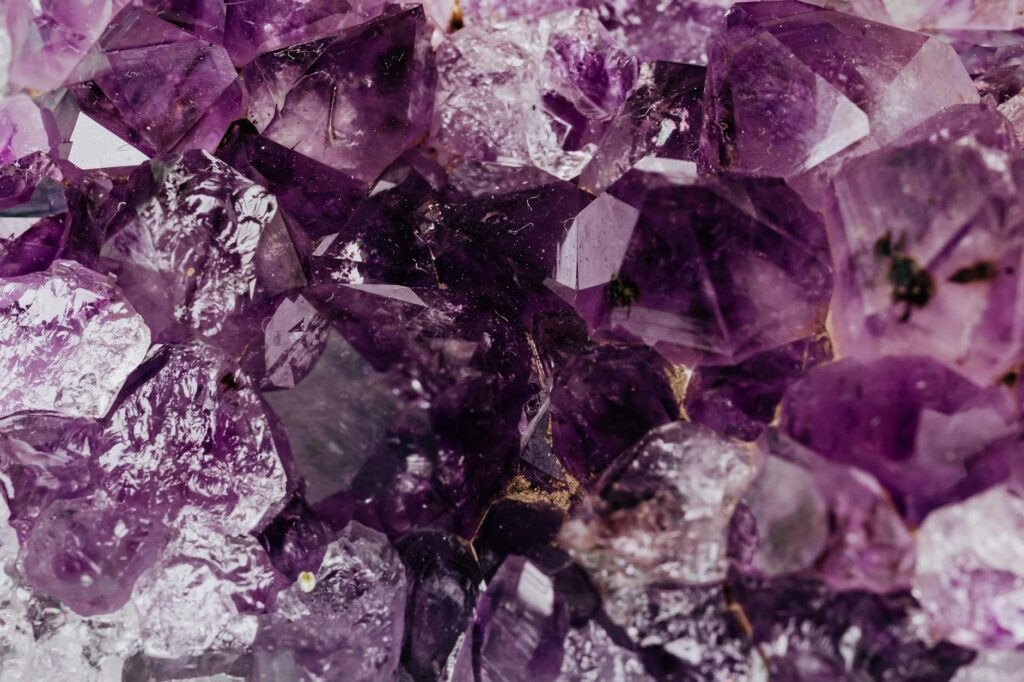
Caring for Your Amethyst
Amethyst is a relatively durable gemstone, with a hardness of 7 on the Mohs scale. However, it’s still susceptible to scratching and chipping. To maintain its brilliance, clean your amethyst with mild soap and water, and avoid exposing it to harsh chemicals or extreme temperatures. Learn how to clean your amethyst jewelry.
Amethyst Varieties and Types
While most amethyst is purple, there are variations such as Chevron Amethyst, which shows distinctive V-shaped patterns, and Cactus Amethyst, known for its dramatic, spiky formations. The unique qualities of each variety make them highly sought after by collectors and enthusiasts. Discover different types of amethyst.
In conclusion, amethyst is a captivating gemstone with a rich history and a wide range of uses. Its beauty, perceived healing properties, and cultural significance have made it a treasured stone throughout the ages. Whether you appreciate its aesthetic appeal or its metaphysical qualities, amethyst undoubtedly holds a unique charm.
Frequently Asked Questions
Is amethyst a rare gemstone? While not exceptionally rare, high-quality amethyst with deep, vibrant color is more valuable and less common.
How can I tell if my amethyst is real? Real amethyst often displays subtle color variations and inclusions, unlike synthetic counterparts which tend to be uniform in color.
How should I cleanse my amethyst? You can cleanse your amethyst by placing it under running water, burying it in the earth, or leaving it under moonlight.
What is the best way to store amethyst? Store your amethyst separately from other jewelry to prevent scratching. A soft cloth-lined box or pouch works well.
Can amethyst fade in sunlight? Prolonged exposure to direct sunlight can potentially cause some amethyst to fade slightly over time, so it’s best to protect it.

